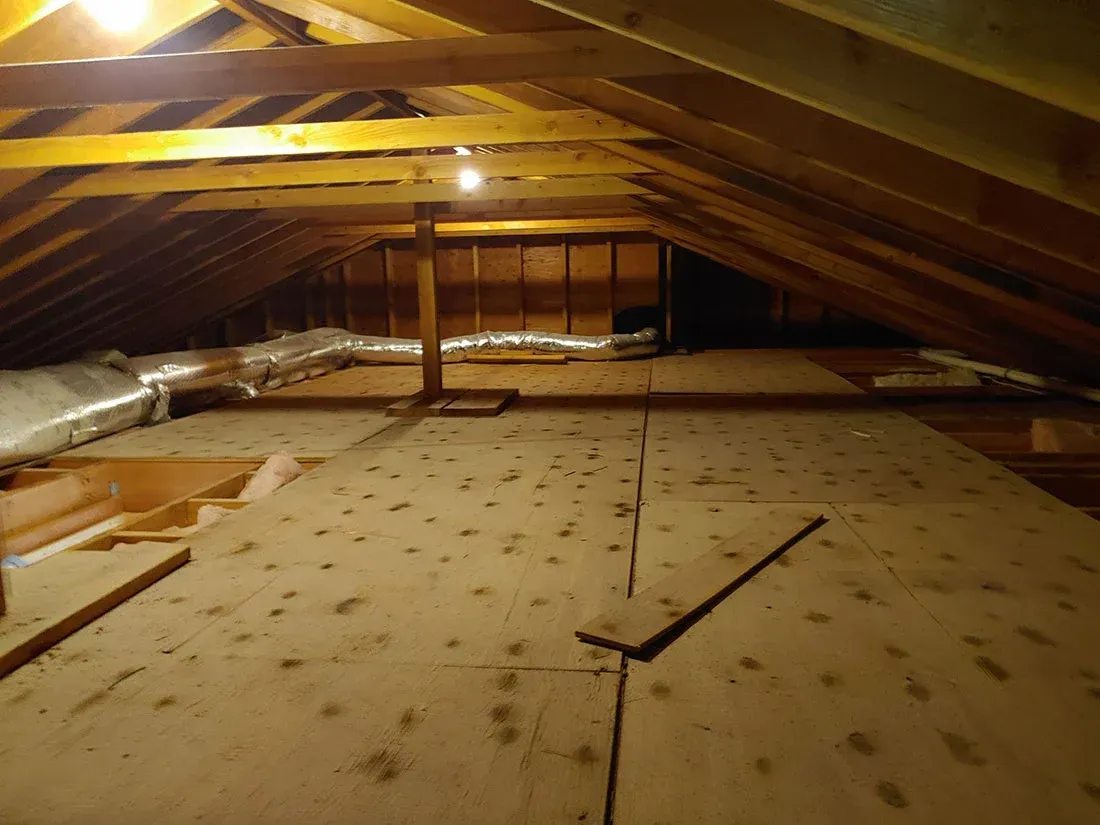The Hidden Dangers of Bathroom Fans and Attic Mold

Bathroom fans are essential for removing excess moisture from your home, but when improperly vented, they can cause significant problems in your attic. Homeowners often overlook that these fans, if not correctly installed, can contribute to moisture buildup, creating the perfect environment for attic mold to thrive. This hidden danger isn't just a minor inconvenience—it can affect your home's structure and lead to health hazards. The core issue lies in how bathroom fans vent moisture into attics, feeding mold growth in ways that can go unnoticed until the damage is extensive. If not addressed promptly, this issue can severely affect your home's integrity and your family's health.
Why Do Bathroom Fans Cause Attic Mold?
Bathroom fans, when vented into the attic instead of outside, inadvertently pump humid air into a space where it shouldn't be. Mold requires three key components to grow: moisture, a food source (such as wood), and the right temperature. An attic, when improperly ventilated, provides all three. The humidity from bathroom fans condenses in the cold attic air, collecting on roof boards and framing. As the moist air rises, it creates a condensation cycle that leads to mold formation.
This issue becomes even more pronounced in colder months as condensation accelerates. Over time, this leads to mold growth on wooden rafters and roof sheathing. Since the attic is often out of sight, mold can increase for months or even years before it's noticed. This is why it's critical to understand that bathroom fans, if not vented correctly, are a significant culprit in attic mold growth.
What are the best practices for preventing attic mold from forming in bathroom fans?
Here are some essential steps homeowners should take.
1. Ensure Proper Venting: Bathroom fans must always be vented outside, never into the attic space. A metal duct should carry the moist air from the fan directly to the outdoors, either through the roof or a sidewall. This prevents moisture from being trapped in the attic, which could otherwise lead to mold formation.
2. Use Insulated Ducts: Ducts should be well-insulated to prevent condensation from forming inside. Moisture that condenses inside the duct can drip back into the attic, exacerbating the problem. Spray foam insulation is often recommended as it provides comprehensive coverage and stabilizes the duct's temperature.
3. Install a Proper Roof Termination Cap: The cap on the exterior end of the duct should have a damper to prevent cold air and moisture from blowing back into the pipe. Without this, moisture can quickly re-enter the system and create new condensation problems.
4. Regular Inspections: Homeowners should periodically check their attics for signs of mold or moisture, especially if they notice increased humidity or suspect their fan isn't working correctly. Early detection prevents more significant issues like wood rot or widespread mold contamination.
How Can Mold in the Attic Affect Your Home and Health?
Attic mold is more than just an aesthetic problem. Mold can cause wood rot, weakening the structural integrity of your roof over time. If left unchecked, mold can spread to insulation, drywall, and even into your home's living spaces. Health effects are another significant concern. Mold spores can infiltrate the HVAC system and circulate throughout your home, potentially causing respiratory problems, allergies, and other health issues.
Since attic mold often goes unnoticed until it becomes severe, homeowners need to be proactive in checking their attics regularly, especially if they suspect improper ventilation or experience excess humidity in their homes.
Preventing Attic Mold from Bathroom Fans
The hidden danger of bathroom fans venting into the attic cannot be overstated. While it may seem like a minor oversight, improper ventilation is a leading cause of attic mold and can significantly damage your home and health. Homeowners should prioritize proper venting of bathroom fans and take proactive measures, such as using insulated ducts and installing a well-sealed roof cap to keep moisture out of the attic.
By following these best practices, you can safeguard your attic from mold growth and protect your home from mold damage's potentially costly and hazardous effects.



